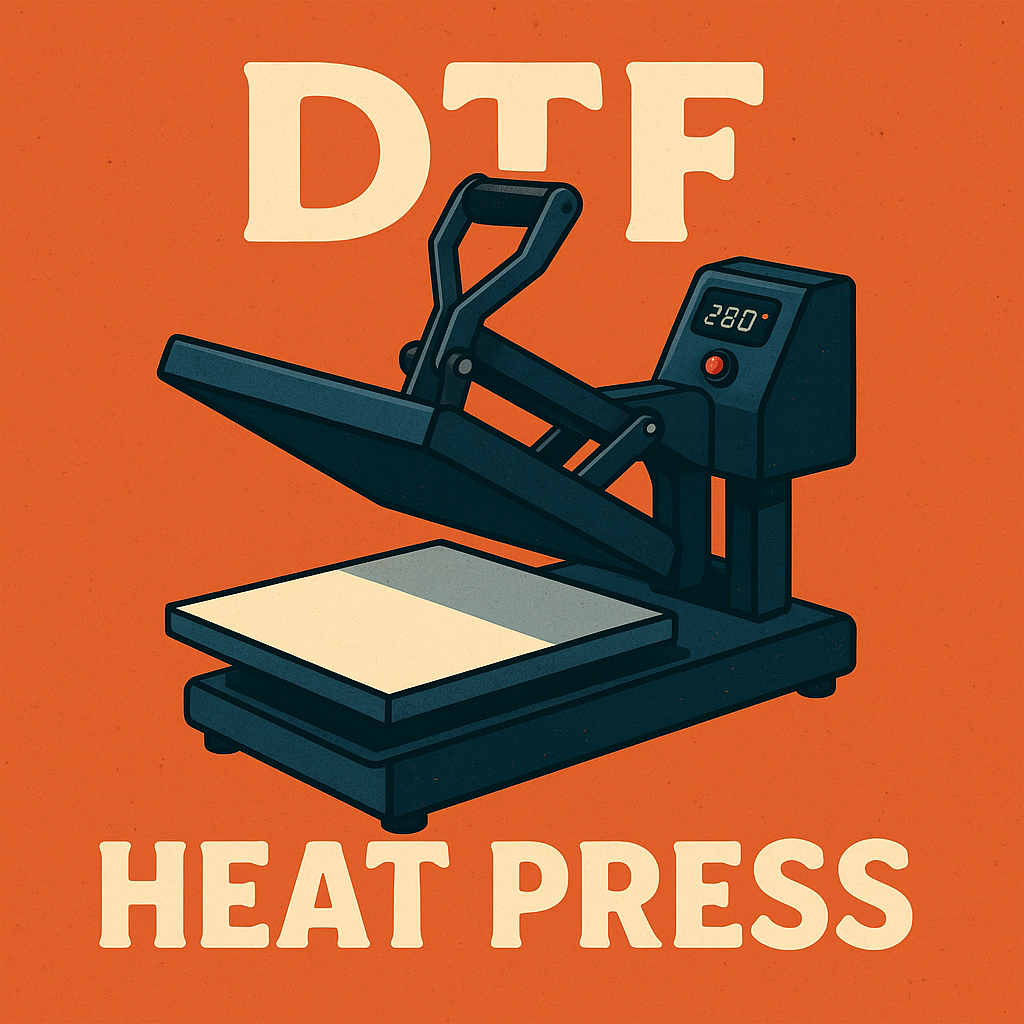You have your high-quality Direct-to-Film (DTF) transfers ready to go, and your garments are waiting. The final piece of the puzzle is the heat press. This single piece of equipment is arguably the most critical factor in achieving a durable, professional-looking print. A common question we hear from new apparel decorators is, "Do I need a special heat press for DTF, or can I use any model?"
The simple answer is that you don't need a "DTF-specific" press, but you absolutely need a quality press. Not all heat presses are created equal. An unreliable machine with inconsistent heat or pressure will lead to failed prints, wasted inventory, and frustrated customers. A home iron simply will not work.
This guide will walk you through the essential features your heat press must have for successful DTF application. We'll cover temperature accuracy, pressure consistency, and how to tackle tricky garments, giving you the confidence to know if your current press is up to the task or what to look for in a new one.
The Three Non-Negotiable Features of a DTF-Ready Heat Press
While brand names and advanced features can be nice, three fundamental characteristics determine whether a heat press is suitable for professional DTF application. If your machine fails in any of these areas, you will struggle to get consistent, long-lasting results.
Accurate and Consistent Temperature
DTF adhesive is engineered to activate within a specific temperature window. For transfers from Southeast Prints, that magic number is 280°F. If your press runs too cold, the adhesive won't melt properly, leading to a weak bond that peels away. If it runs too hot, you risk scorching the garment or damaging the transfer itself.
The problem with many budget-friendly or older presses is that their digital readouts can be misleading. A display that says "280°F" might actually be delivering 260°F in one corner and 300°F in another. This uneven heating is a primary cause of failed prints.
How to Test Your Press:
Don't trust the display. Invest in a digital infrared (IR) thermometer or a surface temperature probe. Before you start pressing, let your machine heat up and then measure the temperature at various points across the platen—the center, each corner, and the middle of each edge. If you find significant "cold spots" or variations greater than 5-10 degrees, your press may be unreliable for professional work.
Even and Adjustable Pressure
Firm, consistent pressure is required to push the melted DTF adhesive into the fibers of the fabric. Without enough pressure, the transfer only sits on the surface, making it susceptible to cracking and peeling.
Your press must be able to apply medium-to-heavy pressure evenly across the entire design. The sturdiness of the machine's frame and the quality of its platen are key here. Flimsy presses can flex under pressure, causing the center of the platen to receive less force than the edges, leading to uneven adhesion.
Clamshell vs. Swing-Away:
- Clamshell Presses: These are popular for their smaller footprint. They are great for standard t-shirts but can sometimes struggle with applying even pressure on thicker items like hoodies.
- Swing-Away Presses: These presses bring the top platen down perfectly flat, which generally provides more even pressure across the entire surface. They are often preferred for their versatility with thicker garments.
Either style can work well for DTF, as long as it is well-built and allows for pressure adjustments. You should be able to feel a solid "thud" when you lock the handle down for a medium-heavy pressure application.
Appropriate Platen Size and Layout
Your heat press platen should be large enough to accommodate your most common designs in a single press. A 15"x15" or 16"x20" press is a versatile choice for most apparel decorators. Using a press that is smaller than your transfer forces you to press the design in multiple sections, which almost guarantees an uneven application and a visible line where the presses overlap.
For more information on the entire DTF process, check out our in-depth DTF Q&A blog.
Practical Tips for Pressing Like a Pro
Even with a great heat press, some garments present unique challenges. Here’s how to handle them.
Pressing Over Seams, Zippers, and Collars
When you press a garment with bulky seams, like a hoodie with a front pocket or a polo shirt with a collar, the raised areas prevent the platen from making even contact with the rest of the design. The areas near the seam receive little to no pressure, causing the transfer to fail in those spots.
The Solution: Use a Heat Press Pillow or Pad
A heat press pillow is a foam-filled, heat-resistant pad that you place inside the garment. This raises the application area so that the bulky seams, zippers, or collars fall off the edge of the pillow. This allows the heat press platen to apply direct, even pressure to the printing surface. It's an essential accessory for anyone printing on hoodies, polos, or zippered items.
Always Follow the Recommended Pressing Instructions
Once you've confirmed your press is reliable, follow the application instructions precisely. For our transfers, the process is simple and tested for success. You can always find the latest instructions on our FAQ page.
- Pre-press: Press the garment for 3-5 seconds to remove moisture and wrinkles.
- First Press: Press the transfer at 280°F for 10 seconds with medium-heavy pressure.
- Peel: Peel the film away (hot or cold).
- Second Press: Cover with a Teflon or butcher paper sheet and press again for 6 seconds to lock in the design.
When Outsourcing Your Transfers Is the Smarter Choice
Investing in a high-quality heat press is a wise decision for any serious apparel business. However, if you are just starting out, working with a budget press, or unsure of your machine's reliability, you have another option: focus on what you can control and let a professional service handle the printing.
By ordering ready-to-press transfers, you eliminate all the variables of the printing and curing process. You receive a perfect transfer every time. Your job is simply to master the final application step. If your press is giving you trouble, it’s far more cost-effective to upgrade your press than to invest in a full DTF printing setup.
At Southeast Prints, we give you the speed and reliability you need to grow your business, even if you’re not ready to buy a new press today. With our industry-leading 24-hour turnaround and same-day shipping on orders placed by 1 PM EST, you get flawless transfers delivered to your door, fast.
Ready to create professional-grade apparel? Upload your premade gang sheet and let us provide the high-quality transfers you need for a perfect press.

